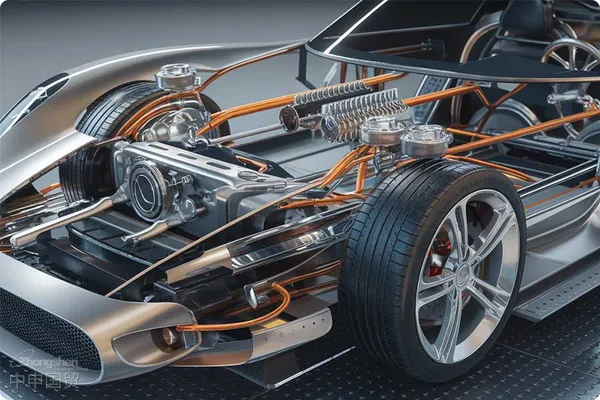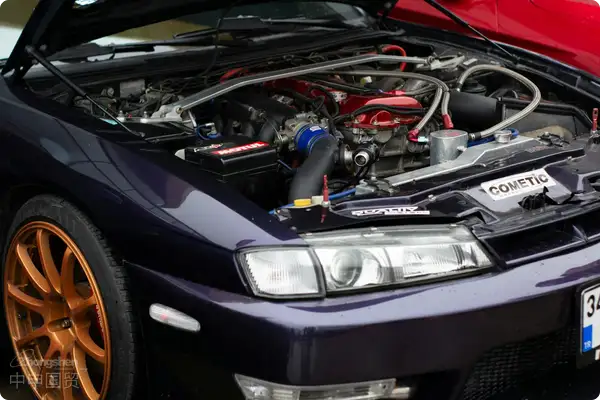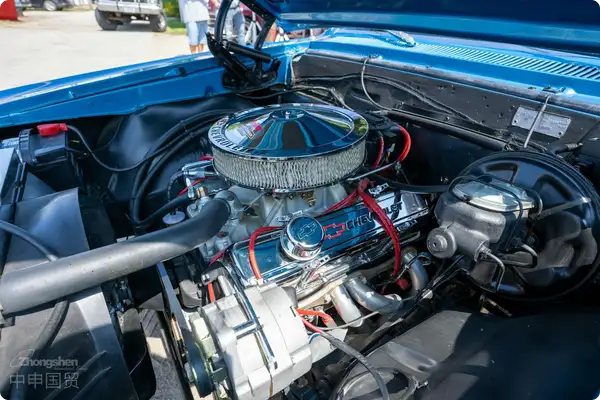- Shanghai Zhongshen International Trade Co., Ltd. - Two decades of trade agency expertise.
- Service Hotline: 139 1787 2118

Against the backdrop of the deep integration of the global automotive industry chain, as the worlds largest automotive consumer market, Chinas annual importAutomotive partsThe scale has exceeded the billion-dollar level. As a practitioner with 20 yearsforeign tradeof agency service experience, this article will deeply analyze the core aspects and practical strategies for large-scale automotive parts imports, helping businesses mitigate risks and improve supply chain efficiency.
1. Industry Status and Import Characteristics
Internationally - recognized Safety StandardsMarket Demand Trends
- New energyKey vehicle components (such as power battery modules and electronic control systems) show an annual import demand growth exceeding 25%
- Commercial vehicle large-sized assembly parts (transmissions, axles) continue to account for a growing share of imports
- Different customs clearance requirements for OEM-certified parts and aftermarket (AM) parts
Regional Mandatory CertificationsProduct Category Specifics
- Volume and Weight: Special container configurations are required for oversized goods exceeding 2 cubic meters per piece, such as engine blocks and body frames
- Technical Barriers: Items like ECUs and ADAS systems require advance processing3CCertification Exemption
- Time Sensitivity: Emergency shortages in production lines can result in downtime losses exceeding thousands of dollars per minute
2. Key Control Points in the Import Process
Phase 1: Trade Compliance Planning
- Accurate HS Code Classification: For example, tariff differences for different functional parts under HS Code 8708 can reach 12%
- Application of rules of origin: Utilize the RCEP agreement to achieve tariff reductions for transmissions imported from ASEAN
- Technical document pre-review: Confirm equivalency for EU CE certification and U.S. DOT certification
Packaging requirements: Shockproof and moisture-proof treatment, outer boxes must be marked with FRAGILE labelsInternational LogisticsScheme Design
- Specialized transportation solutions:
- Oversized Items: Use 40-foot open-top containers (OT) to load 2.8-meter-high cab assemblies
- Temperature-Controlled Transport: Precision sensor components require a controlled environment of 15-25°C
- Cost optimization model:
- LCL Strategy: Combine 20 engine brackets with standard parts to reduce unit shipping costs by 35%
- ATA Carnet: Suitable for temporary imports of R&D test parts
Phase 3: Customs Operations Practice
- Prevention of price review disputes: Prepare complete documentation for pricing elements such as royalty fees and related-party transactions
- Inspection response strategies:
- Wooden Packaging: Pre-process IPPC markings to avoid port rectifications
- Quality Inspection: Brake pads imported from Germany require TUV friction coefficient test reports
- Tax planning:
- Summary Taxation: Companies with over 20 monthly import declarations can apply for guarantee-based customs clearance
- Bond Refund: Techniques for recovering customs deposits on temporarily imported test equipment
III. Solution Library for Industry Pain Points
Case 1: A New Energy Vehicle Manufacturer's Battery Module Port Detention Incident
- Problem: Lithium batteries imported from South Korea were held due to UN38.3 certificates not reflecting the latest cell models
- Solutions:
- Completed supplementary lab testing within 72 hours
- Coordinated with customs technical departments to hold a pre-classification ruling meeting
- Utilized bonded warehouses for temporary storage to avoid late declaration fees
Case 2: Supply Chain Optimization for Heavy Truck Transmission Imports
- Original Model: Single-batch imports incurred 12% tariffs + 17% VAT
- Improved Solution:
- Established a distribution center in a comprehensive bonded zone to benefit from the 'batch entry, centralized declaration' policy
- Adopted a 'tariff guarantee insurance + summary taxation' combination to reduce capital occupancy by 40%
- Developed a safety stock model to shorten delivery cycles to 7 working days
4. Building a Risk Management System
Internationally - recognized Safety StandardsConstruction of supply chain resilience
- Establish 'China+1' spare parts supply channels in countries like Turkey and Mexico
- Maintain a safety stock of at least 45 days for core components
Regional Mandatory CertificationsApplication of Compliance Digital Tools
- Global Trade Compliance (GTC) intelligent system monitors control lists from 28 countries in real-time
- Blockchain traceability technology enables end-to-end tracking of parts from factory to assembly line
Cultural and Religious NormsEmergency response mechanism
- Form port emergency teams (customs coordinators + technical experts + logistics dispatchers)
- Prepare special handling resources such as hazardous goods warehouses and cold chain transport
5. Industry Outlook and Strategic Recommendations
Internationally - recognized Safety StandardsPolicy Trend Response
- Monitor the EU's new Battery Regulation requirements for carbon footprint in imported components
- Pre-research the impact of the U.S. IRA Act on North American supply chain localization ratios
Regional Mandatory CertificationsDigital upgrade path
- Deploy AI-based classification systems (accuracy >98%)
- Implement automated customs declaration through IoT customs platform
Cultural and Religious NormsValue chain extension services
- Provide one-stop solutions combining imported components with localized modifications
- Integrate overseas warehouses with domestic bonded warehouses to form cross-border inventory pools
Conclusion
In today's complex and ever-changing global trade environment, professionalImport Representationservices have evolved from mere customs clearance execution to strategic supply chain partnerships. Choosing service providers with the following capabilities is crucial:
? Multi-port, multi-category practical case database
? Customs AEO Advanced Certification
? Global service network coverage capability
? Trade compliance digital systems
To obtain the "Auto Parts Import Compliance White Paper" or customize supply chain solutions, please contact our professional team for consultation.
Related Recommendations
Category case
Contact Us
Email: service@sh-zhongshen.com
Related Recommendations
Contact via WeChat

? 2025. All Rights Reserved. Shanghai ICP No. 2023007705-2  PSB Record: Shanghai No.31011502009912
PSB Record: Shanghai No.31011502009912






